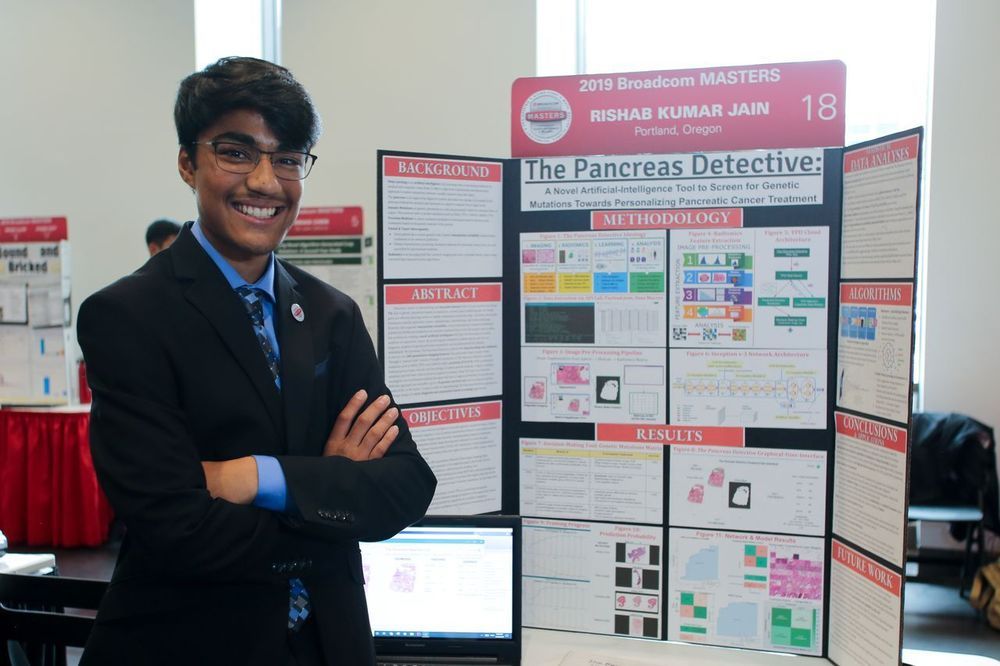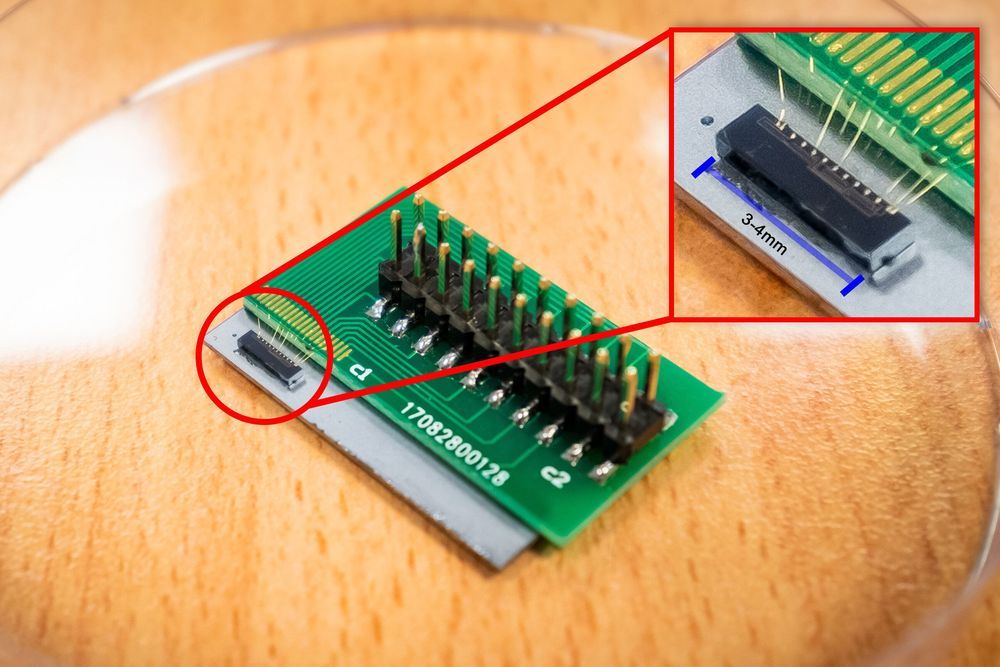The U.S. military is preparing for the age of AI and algorithmic warfare, and it’s getting help from tech giants like Facebook, Google, and Microsoft.



OpenAI’s text generator, machine learning-powered—so powerful that it was thought too dangerous to release to the public, has, guess what, been released.
OpenAI published a blog post announcing its decision to release the algorithm in full as it has “seen no strong evidence of misuse so far.”
Well, that was a turnaround.

If Goldman Sachs’ new tool launches through Marcus, a human-digital hybrid approach would be a wise choice.
Goldman Sachs created a market-ready robo advisor and is mulling how to launch it, Financial Planning reports. The automated platform will represent Goldman’s digital entry into the smaller investor market, per Rachel Schnoll — who recently became the head of Goldman’s FinLife CX RIA platform — as cited by Financial Planning. The new robo advisor may be built in part on algorithms that Goldman acquired from financial life management firm United Capital, when it acquired the company for $750 million in May.
The new robo advisor could be introduced to the market via Goldman’s Marcus segment — here’s why it would be a good match. Goldman could extend a portion of the personal touch it brings to its Private Wealth Management clients to Marcus clients by offering them financial advice via the new robo advisor.
This could help elevate the bank’s play to target more retail banking customers, and could make up for the fact that the high interest rate Marcus boasts slipped from 2.25% to 1.9% since July. But Marcus isn’t the only potential route to market: Goldman is also considering launching its robo tech to financial advisors on the United Capital platform, per Schnoll.

Have you ever laid wide-awake in the late hours of the night wondering what your life would look like if you took that other job, moved countries, or ended up with someone else? While there’s no definite answer — and probably never will be — the idea that there’s multiple versions of you, living in various universes, isn’t as make-believe as you might think.
According to Sean Carroll, a theoretical physicist at the California Institute of Technology and author of Something Deeply Hidden: Quantum Worlds and the Emergence of Spacetime, the increasingly popular theory of Many Worlds Interpretation suggests every fundamental event has multiple possible outcomes and splits the world into alternate realities.
This mind-bending idea originally came from Hugh Everett, a graduate student who wrote just one paper in the 1950s. Everett’s theory describes the universe as a “changing set of numbers, known as the wave function, that evolves according to a single equation.” According to Many Worlds, the universe continually splits into new branches, to produce multiple versions of ourselves. Carroll argues that, so far, this interpretation is the simplest possible explanation of quantum mechanics.

Learning something new — and quickly — may depend on the lesson’s difficulty level, according to a new study.
Flipping the classroom, room temperature, and later school-day start times, are just a few of the countless interventions scientists have tested and some educators have implemented.
Now, scientists say they have cracked the code on the optimal level of difficulty to speed up learning. The team tested how the difficulty of training impacts the rate of learning in a broad class of learning algorithms, artificial neural networks, and computer models thought to simulate learning in humans and animals.

Two and a half months since Erik Verlinde submitted his entropic gravity paper, and all of physics and cosmology has turned into entropy. Well, I am exaggerating a bit, and perhaps more than just a bit. Yet, fact is that within two weeks of Erik’s publication a steady stream of ‘entropic everything’ papers has developed at a rate of close to one paper per day. Gravity, Einstein’s equations, cosmic expansion, dark energy, primordial inflation, dark mass: it’s all entropic. Chaos rules. Entropy is king!
Or is it?
Could it be that an ‘entropic bandwagon’ has started rolling? Is this all not just a fad appealing to scientist tired of string theory? What is this elusive entropic force anyway? Do these folks really believe bits of information attract each other?

Microsoft and Warner Bros. have collaborated to successfully store and retrieve the entire 1978 iconic “Superman” movie on a piece of glass roughly the size of a drink coaster, 75 by 75 by 2 millimeters thick.
It was the first proof of concept test for Project Silica, a Microsoft Research project that uses recent discoveries in ultrafast laser optics and artificial intelligence to store data in quartz glass. A laser encodes data in glass by creating layers of three-dimensional nanoscale gratings and deformations at various depths and angles. Machine learning algorithms read the data back by decoding images and patterns that are created as polarized light shines through the glass.
The hard silica glass can withstand being boiled in hot water, baked in an oven, microwaved, flooded, scoured, demagnetized and other environmental threats that can destroy priceless historic archives or cultural treasures if things go wrong.

A team of researchers affiliated with several institutions in France has revisited the idea of improving on estimates of the upper limit of the mass of a graviton. In their paper published in the journal Physical Review Letters, the group describes their accurate measurement of the parameters of planetary bodies and what they found.
Einstein’s theory of general relativity suggests that the gravity of large masses that warps spacetime comes from a theoretical massless particle called the graviton. Scientists have been trying for many years to either prove the theory correct or disprove it by finding a way to show that it has mass. One approach to such a proof involves studying the speed of the expansion of the universe—this approach has suggested that if the graviton does have a mass, its upper limit would be approximately 10 −32 electron-volts. Unfortunately, this result is based on a lot of assumptions, many of which are still controversial. Another way to do it is by studying planetary orbital deviations that could only come from a nonzero graviton mass—and starting with the assumption that if a graviton has zero mass, then like the photon, it should travel at the speed of light. In this new effort, the researchers have found a way to improve the accuracy of this approach.
The work involved temporarily freezing the motion of the stars and planets at different points in time—the first was the year 2000. The researchers found the masses, positions and speed of the sun, the planets and several asteroids for that year. They then ran equations that allowed them to roll forward in time to 2017 and back to 1913 and forward again as needed. These time periods were chosen because the team was able to find usable data for them. In running the calculations, the researchers found that they were able to come up with an estimation for the upper limit of the graviton of 6.76 × 10 −23—with a probability of 90 percent. The researchers note that their number was very close to that found by a team using data from the LIGO interferometers, but suggest that any similarities were purely coincidence.

A Portland teen won second place in a national technology contest, taking home $2,500 that he can use to attend science camp next summer.
Rishab Jain, 14, is a freshman at Westview High School. His winning project, which he calls the Pancreas Detective, is an artificial intelligence tool that can help diagnose pancreatic cancer through gene sequencing. The algorithm helps doctors focus on the organ during examinations, which is often obscured because it moves around the abdominal area as patients breathe and other bodily functions shift other organs as well.
Last year, the same project netted $25,000 from 3M when he attended Stoller Middle School. He used that money to fund his nonprofit, Samyak Science Society, which promotes science, technology, engineering and math education for other children, Time Magazine reported.

Researchers at Nanyang Technological University, Singapore (NTU Singapore) have developed a quantum communication chip that is 1,000 times smaller than current quantum setups, but offers the same superior security quantum technology is known for.
Most leading security standards used in secure communication methods—from withdrawing cash from the ATM to purchasing goods online on the smartphone—does not leverage quantum technology. The electronic transmission of the personal identification number (PIN) or password can be intercepted, posing a security risk.
Roughly three millimeters in size, the tiny chip uses quantum communication algorithms to provide enhanced security compared to existing standards. It does this by integrating passwords within the information that is being delivered, forming a secure quantum key. After the information is received, it is destroyed along with the key, making it an extremely secure form of communication.